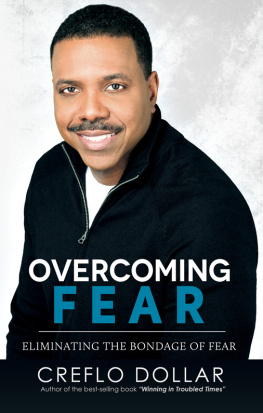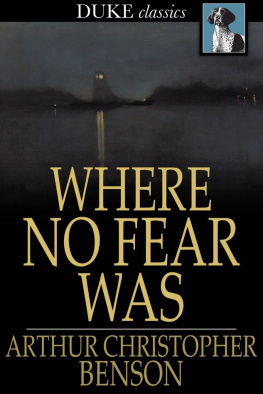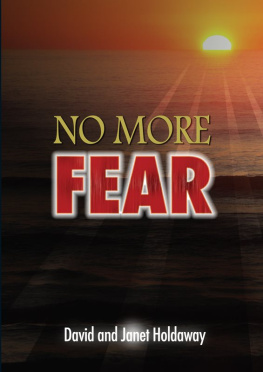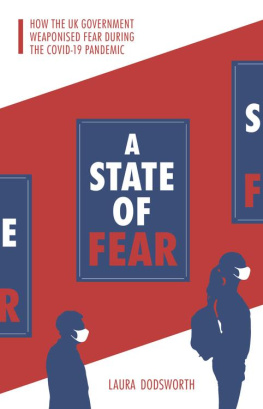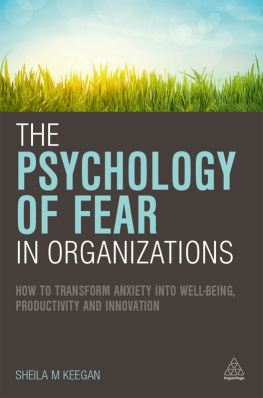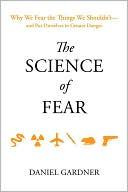First published 2002 by Transaction Publishers
Published 2017 by Routledge
2 Park Square, Milton Park, Abingdon, Oxon 0X14 4RN
711 Third Avenue, New York, NY 10017, USA
Routledge is an imprint of the Taylor & Francis Group, an informa business
Copyright 2002 by Taylor & Francis.
All rights reserved. No part of this book may be reprinted or reproduced or utilised in any form or by any electronic, mechanical, or other means, now known or hereafter invented, including photocopying and recording, or in any information storage or retrieval system, without permission in writing from the publishers.
Notice:
Product or corporate names may be trademarks or registered trademarks, and are used only for identification and explanation without intent to infringe.
Library of Congress Catalog Number: 2001045919
Library of Congress Cataloging-in-Publication Data
Altheide David L.
Creating fear: news and the construction of crisis / David L. Altheide. p. cm (Social problems and social issues)
Includes bibliographical references and index.
ISBN 0-202-30659-3 (cloth : alk. paper) - ISBN 0-202-30660-7 (pbk.: alk. paper)
1. Mass media and public opinion United States. 2. Fear United States. 3. Mass mediaPsychological aspects. 4. Public opinion United States. I. Title. II. Series.
P96.P832 U62 2001
302.23 0973dc21
2001045919
ISBN 13: 978-0-202-30660-5 (pbk)
This book is about fear and its expanding place in our public life. I document the increase in the word fear and the rise of a discourse of fear in the mid 1990s: the pervasive communications, symbolic awareness, and expectation that danger and risk are all around us. I offer an explanation of how this occurred and suggest some social consequences that it has had.
Fear is a scary thing. This book has helped me understand it better, but it has not been easy. I formally began studying fear in the news media and popular culture about ten years ago, but I have experienced fear in other ways. I have seen firsthand what a massive dose of news media reports about crime and fear can do to people. My extraordinary ninety-year-old mother-in-law often speaks of being afraid and notes how many of her friends at the senior center discuss recent news reports about crime and mayhem, whether those reports originate in Tempe, Arizona, where she lives, or in New York City, or in Japan. This is ironic since this woman is one of the most courageous people I know and has dealt with many aspects of life and death that would frighten most people. By any accounts, she is a rock of stability and throughout her life has not been afraid of anything. Yet, she speaks as though the world has gone out of control. Likewise, my eighty-six-year-old father will often describe, in the same letter, how much better his life is, but then conclude with the observation that the world is getting worse and worse. This, too, seems ironic given the courageous life that he has lived. While much of the preoccupation by these elderly people can be blamed on being older, I think that more is involved. I suspect that one thing that contributes to a feeling of vulnerability by many elderly people is that their more limited mobility and opportunities to participate directly in social life leads them to rely more on the indirect participation through the mass media and especially news reports, both print and electronic. And the overwhelming message of these reports is fear.
This book was in the final stages of production when deadly attacks on New York and Washington, D.C. occurred on September 11,2001. While no analysis of the massive news coverage is offered in this work, readers familiar with the news media coverage of these horrific events can find many parallels with key points that I make in the following chapters. The entertainment format, use of visuals, emerging icons of fear, slogans, and especially the emphasis on the fear frame and evil provide many examples of how these attacks contributed to the expansion of the discourse of fear into more attempts at social control.
I have been working on this book for more than a decade, but the overall project defines my academic life. This project concerns the nature and use of social power and social control. There is a simple thesis that joins this work with my previous modest efforts: The mass media play a significant role in shaping social definitions that govern social action. Relatedly, my methodological and theoretical foundation in classical social theory, existential-phenomenology, ethnomethodology, and symbolic interactionism leads me to view social power as the capacity to define situations for self and others. Most of my academic life has been focused on sorting out the ways that the mass media and popular culture help define social situations. Therefore, it is important to understand the nature, process, and organization of mass media operations, including news procedures, perspectives, and formats. It is also important to recognize the need to expand our methodological frameworks so that we can use new information technologies and information bases to ask different questions than we have in the past.
Different versions of several of the pieces of this book have appeared elsewhere.
, The Sociological Quarterly, 1997 (38): Courtesy of JAI Press.
, The Sociological Quarterly, 1999 (40): Courtesy of University of California Press.
, from Jaber F. Gubrium and James A. Holstein, eds., Handbook of Interviewing. Thousand Oaks, Calif.: Sage Publications. Forthcoming.
This project has been aided by many others, particularly my colleague (happily retired!) Robert P. Snow, who shared the effort to identify the nature and consequences of media logic and communications formats for constructing social definitions, social identities, and social order. Our work over two decades has stressed that it is the form of mass media and entertainment logic and formats that is the most significant for social life and not the content, per se. We have attempted to elaborate this conceptual process and to demonstrate its use across social institutions.
Many other people have contributed to this project over the years, including John Johnson, the late Carl Couch, Richard V. Ericson and his students, and many others. I am particularly indebted to the creative work by graduate students who have taken our modest efforts and extended them to additional analyses and topics. I have been very fortunate to work with R. Sam Michalowski, who contributed materials and ideas (particularly in . Students in several graduate seminars helped explore further the connection between fear and victims: Barbara Gray, Roy Janisch, Lindsey Korbin, Ray Maratea, Debra Neill, Joseph Reaves, and Felicia Van Deman. Their insights were helpful in recognizing how pernicious the victim status has become, how it is used by social control agencies, and how important it is for creative thinkers to move beyond victimization toward more creative and supportive frameworks for recognizing consequences of social power and providing meaningful ameliorative options. The editor of this series, Joel Best, has been very supportive and I appreciate his intellectual leadership in gaining a better understanding of the interplay of culture, media, and social control. Finally, I cant complete any project without thanking Carla for loving me and believing in my work. I am most fortunate.


